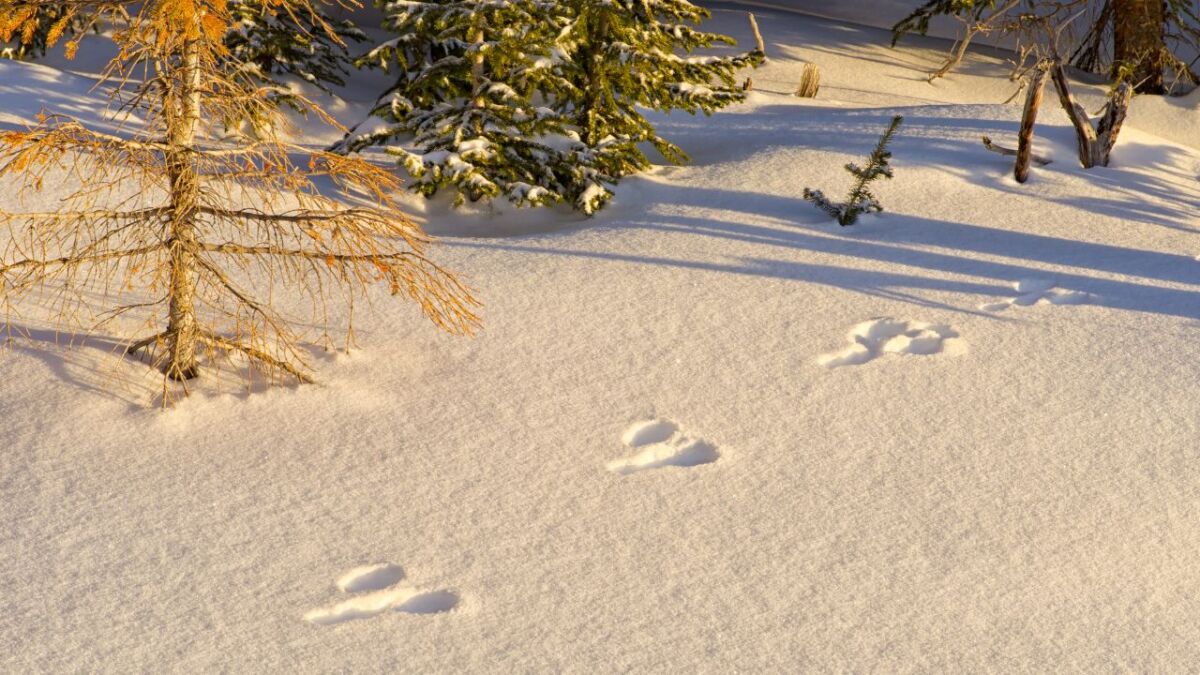
tracking
Nomen
Meaning
Tracking is the art of following and interpreting animal tracks and signs in the wilderness. It is an essential skill for survival, bushcraft, and outdoor enthusiasts. By studying tracks, scat, and other traces left behind by animals, you can gain valuable insights into their behavior, habits, and movements. Tracking allows you to identify potential food sources, locate water, and avoid dangerous predators. It also enhances your connection with nature and deepens your understanding of the natural world. Whether you're camping, hiking, or exploring the wild, tracking is a valuable tool that can greatly enhance your outdoor experience.

Examples
„During our hike, we came across fresh tracks of a bear. We decided to change our route and give the bear its space.“
„My friend, an experienced tracker, taught me how to identify different animal tracks based on their size, shape, and depth. It was fascinating to learn about the secrets hidden in the forest floor.“
„As I followed the tracks of a deer, I noticed signs of its feeding behavior and the direction it was heading. Tracking not only helps you find animals but also provides valuable insights into their habits and movements.“
„The art of tracking requires patience, observation, and a deep understanding of animal behavior. It's a skill that can be honed over time and can greatly enhance your wilderness experience.“
„I love tracking animals in the wilderness. It's like solving a puzzle and connecting with nature on a deeper level.“
„Tracking is an essential skill for any survivalist. It allows you to locate food sources, avoid dangerous predators, and navigate through unfamiliar terrain.“
„During my last camping trip, I came across fresh tracks of a deer. By analyzing the size and depth of the prints, I could estimate the direction it was heading and how long ago it passed through.“
„The indigenous people of this region have been tracking animals for generations. They have a deep understanding of the signs left behind by different species and can follow their trails effortlessly.“
„Tracking is not just about footprints. It also involves observing other signs like broken branches, scat, and fur left behind by animals. These clues can provide valuable information about their behavior and habits.“
Origin
The word "tracking" originates from the Old English word "træcian," which means to follow a trail or footprints. It has its roots in the Germanic language family, specifically the West Germanic branch. The concept of tracking has been an essential skill for humans throughout history, allowing them to hunt, navigate, and gather information about their surroundings.
Over time, tracking has evolved and developed into a specialized field of study, particularly in the context of wilderness survival and bushcraft. It involves observing and interpreting signs left by animals or humans, such as footprints, scat, broken branches, and disturbed vegetation, to gain insights into their movements and activities.
In the modern context, tracking has become an integral part of various disciplines, including wildlife conservation, search and rescue operations, and forensic investigations. It requires a keen eye, knowledge of animal behavior, and the ability to interpret subtle clues in the environment.
As a survival skill, tracking allows you to understand the behavior of animals, identify potential food sources, and avoid dangerous predators. It also enhances your situational awareness and helps you navigate through unfamiliar terrain.
Whether you are an outdoor enthusiast, a wildlife enthusiast, or simply curious about the natural world, learning the art of tracking can deepen your connection with nature and provide valuable insights into the lives of the creatures that inhabit it.
Synonyms
Tracing, Following, Hunting, Pursuing, Trailblazing, Stalking, Shadowing, Monitoring
Antonyms
Untracking, Losing track, Not following, Not tracing, Not pursuing, Not hunting, Not stalking, Not shadowing
Relatives
Hunting, Animal behavior, Footprints, Wildlife, Nature, Survival skills, Wilderness, Navigation
Historical and cultural importance
Tracking has a rich historical and cultural significance, deeply rooted in the human experience of survival and exploration. Throughout history, tracking has been an essential skill for hunters, gatherers, and indigenous peoples, enabling them to navigate and understand their environment.
In ancient times, tracking was crucial for survival, as it allowed early humans to locate and hunt animals for food. It was also used to identify potential threats and avoid dangerous predators. Tracking skills were passed down from generation to generation, forming an integral part of indigenous cultures and traditions.
During the colonial era, tracking played a pivotal role in the exploration and expansion of new territories. Explorers and pioneers relied on tracking to navigate unfamiliar landscapes, find water sources, and discover new resources. Tracking became a vital tool for survival in the wilderness, enabling settlers to adapt and thrive in challenging environments.
Today, tracking continues to be valued for its practical applications in various fields. It is widely used in wildlife conservation to monitor animal populations, study their behavior, and protect endangered species. Tracking skills are also employed by search and rescue teams, law enforcement agencies, and military personnel to locate missing persons, track criminals, and gather intelligence.
Furthermore, tracking has gained popularity as a recreational activity, with enthusiasts engaging in tracking expeditions and competitions. It offers a unique opportunity to connect with nature, sharpen observational skills, and deepen one's understanding of the natural world.
In conclusion, tracking holds immense historical and cultural significance, serving as a testament to humanity's enduring relationship with the wilderness and our innate survival instincts.
More information about the term tracking
Tracking: The Art of Following Nature's Footprints
Tracking is the ancient art of following the footprints and signs left behind by animals and humans in the wilderness. It is a skill that has been practiced by indigenous peoples and survival experts for centuries, allowing them to navigate through the wild, hunt for food, and gain valuable insights into the natural world around them. In this article, we will explore the fascinating world of tracking and how it can enhance your wilderness experience.
The Basics of Tracking
Tracking involves observing and interpreting various signs left behind by animals or humans. These signs can include footprints, scat, broken branches, disturbed vegetation, and even the presence of certain smells. By carefully studying these signs, a tracker can determine the type of animal or human that passed through an area, its size, direction of travel, and even its behavior.
One of the key skills in tracking is the ability to differentiate between different types of footprints. This requires a keen eye for detail and an understanding of the specific characteristics of each animal's tracks. For example, a deer's hoof print will look different from that of a bear or a wolf. By learning to recognize these differences, you can accurately identify the animals that have passed through an area.
The Art of Observation
Tracking is not just about following footprints; it is also about observing the surrounding environment. A skilled tracker can pick up on subtle cues such as broken twigs, disturbed leaves, or the presence of certain plants that indicate the passage of an animal. These observations can provide valuable insights into an animal's behavior, feeding habits, and even its state of health.
Tracking also requires patience and a deep connection with nature. It is about immersing yourself in the wilderness, becoming attuned to its rhythms, and learning to read the language of the land. By honing your observation skills and developing a keen sense of awareness, you can become a proficient tracker and gain a deeper understanding of the natural world.
Applications of Tracking
Tracking has numerous practical applications in the wilderness. For hunters, it can be a valuable tool for locating game and increasing their chances of a successful hunt. For nature enthusiasts, it offers a unique way to connect with the environment and gain a deeper appreciation for the intricacies of the natural world.
Tracking can also be a useful skill in survival situations. If you find yourself lost or stranded in the wilderness, being able to track animals or humans can help you find sources of food, water, or even civilization. It can also provide valuable information about potential dangers or threats in the area.
Conclusion
Tracking is a skill that allows us to tap into our primal instincts and connect with the natural world on a deeper level. By learning to read the signs left behind by animals and humans, we can navigate through the wilderness with greater confidence and gain a deeper understanding of the ecosystems we are a part of. So, next time you find yourself in the wild, take a moment to observe the footprints and signs around you – you never know what secrets they may reveal.
Back to overview

